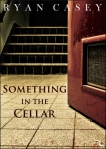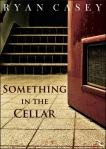***Special note: I got this story as part of a Story Bundle, where you can get a selection of Indie Books for one low price. Check it out!
 I think there are two kinds of short stories: the “novel in miniature,” and the “punchline.” The former, as you’d imagine, is everything you’d expect from a novel, just shorter–and most good short stories would fall under this category. The punchline is a story that exists for a specific end; the author wants to make a particular point (not always a joke, mind you), and the story serves as a sort of roadmap so the reader gets there. It’s a lot harder to pull off–but when you do, it’s wonderful. Asimov is a master at these kinds of stories, and in fact, they seem common in the science fiction genre. But I hadn’t really come across one from the Indie Writing community until I read Jefferson Smith’s Bodies of Evidence.
I think there are two kinds of short stories: the “novel in miniature,” and the “punchline.” The former, as you’d imagine, is everything you’d expect from a novel, just shorter–and most good short stories would fall under this category. The punchline is a story that exists for a specific end; the author wants to make a particular point (not always a joke, mind you), and the story serves as a sort of roadmap so the reader gets there. It’s a lot harder to pull off–but when you do, it’s wonderful. Asimov is a master at these kinds of stories, and in fact, they seem common in the science fiction genre. But I hadn’t really come across one from the Indie Writing community until I read Jefferson Smith’s Bodies of Evidence.
Now, I should make something clear: I like punchline short stories. When they’re done right, they’re a lot of fun: quick, entertaining, and relevant. Even when they’re not funny–Asimov’s The Last Question is the best example of this I can think of–they can be extremely thought provoking. Bodies of Evidence manages to hit both targets. It’s a darkly humorous tale that asks an interesting question: what about the middleman?
I’ll explain, but first an overview of the plot: Sid works for Corpus Corp., an outfit that cleans up the pesky mess left at a murder scene. He’s training a new kid–it’s a tough job, and he has to push the newbie to make sure he’s up to the task. The story follows Sid and the kid as they clean up a relatively simple job–though not less disconcerting for it.
Quick, entertaining, and relevant. These are normal guys just doing a job–a shady job, admittedly, but it has to be done. Sid and the kids are the middlemen–the cogs of darkness as our narrator puts it.
And this is what I like most about the story. One of the necessary failings of storytelling is that you’re always telling the story of something important or noteable. You want to read about the daring knight, not his follow-along squire; the mastermind mad scientist, not the butler who brings him supper. When telling a story, you should always ask “why today?” and “why these characters?” If they’re not important, why bother telling the story?
The result is that stories are always significant and grand–the way we like them. But I always wonder about the people who aren’t important. The ones who make it work behind the scenes. What’s their story?
Bodies of Evidence successfully addresses this question by showing us just another night at work for two people trying to make ends meet. There’s a larger story going on here–a criminal mastermind has just ordered some powerful directed energy weapons and plans to take over the world–but we don’t even care about that. Smith does an excellent job of setting this larger story aside so we can concentrate on the little guy, in turn making that the better story. And it works, very well.
I don’t know if this was the author’s intent, but it serves the story. Concentrating on these cogs of darkness fleshes out his world, giving us a look behind the curtain. This technique can be powerful when used correctly because it provides a foundation for the larger stories when they come along. If Smith were to write a novel set in the same world, he wouldn’t have to waste space on telling us what Corpus Corp does–it’s already here.
But this story is more than just a “behind the scenes look” at the criminal world. It’s funny and explores a couple of good characters. Even without the “cogs of darkness” aspect, it’s a well written and entertaining story.
The one thing I didn’t like about the story is how it’s presented to the reader. It’s introduced by a narrator, Louis Corelli, a go-to guy in the employ of the aforementioned mad scientist. He introduces us to Sid and the idea that the underworld is built on the shoulders of such working class folks, then lets the story tell itself. What’s disorienting about this is that Corelli’s scene is told in the first person. At first this works really well, because he addresses the reader directly, bringing the reader into the world in a personal way.
Once we meet Sid, however, the narrative switches to third person without any real transition beyond a line break and a hint that Sid told the story to Corelli. This makes it seem like part of Corelli’s narrative until you realize that it’s in the past tense.
The story is also framed with a narrative, by Corelli, in italics; he’s blatantly setting up the story for the reader. Normally this would work really well, but moving from that frame story to a first person narrative, then a third person story told by someone else, is a bit disorienting. This isn’t a fault in the writing so much as a stylistic or formatting choice; if, for example, the entierty of Corelli’s set up were confined to the frame story (which is what it really is), the story would flow smoothly.
I also want to know more about Corelli. He’s introduced to the reader as what we’d call a Watson: he’s there to explain things to us so we’re not bogged down by exposition. It’s a great technique, especially when that character has a personal connection to the reader, as Corelli does here. This connection can only grow stronger with further entries into the series. The World Smith has set up is intriguing as well; there are hints of a pseudo-sci-fi bent, with particle weapons and even a mention of time travel, though this isn’t explicitly a science fiction story. It would be very interesting to read about a world where such futuristic technology exists without it being the focus of the World. As far as I’ve seen, this story is the only entry in a supposed series, but I hope more are forthcoming.
All in all, it’s a great read–you can pick it up at Amazon for $0.99, and I’d certainly recomend checking it out!
Jefferson Smith also has a novel available on Amazon, Strange Places. You can find him on Twitter, Goodreads, and his own blog, Creativity Hacker.




